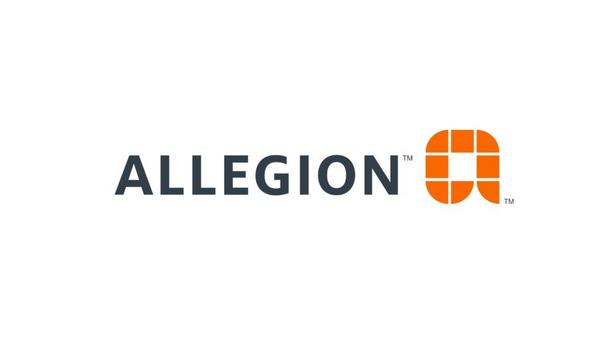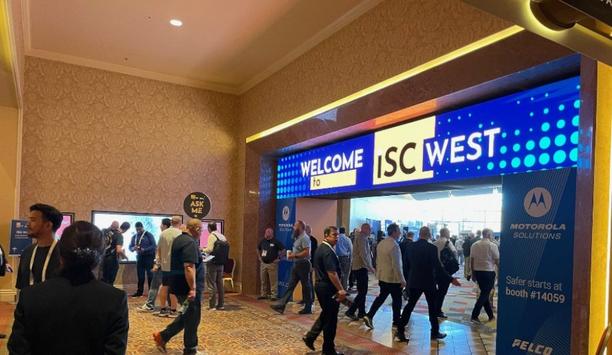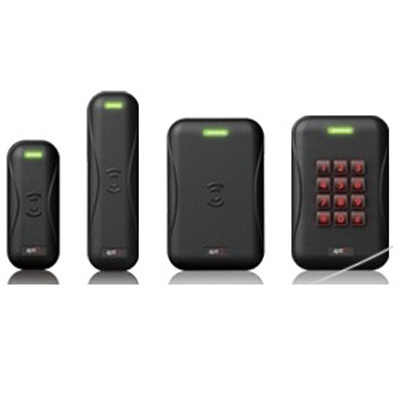Allegion (UK) Ltd - Experts & Thought Leaders
Latest Allegion (UK) Ltd news & announcements
The Security Industry Association (SIA) has announced its new Board of Directors chair-elect and presented its new and returning members to the SIA Board of Directors on April 1 at The Advance, SIA’s annual membership meeting, and the following Board of Directors meeting during ISC West. The SIA Board of Directors ratified the selection of Mike Mathes, executive vice president (EVP), western operations at Convergint and former treasurer of the SIA Board of Directors, as SIA chair-elect. Three new voting members Additionally, the board ratified the selection of three new voting members of the Board of Directors to serve two-year terms from 2025 to 2027: Min Kyriannis, chief executive officer and co-founder, AMYNA Systems Bobby Louissaint, head of technical partnership engagement, Global Systems Services and Technology, Meta Don Young, EVP and chief operating officer, ADT. Six individuals in the second two-year term Six individuals were confirmed to serve a second two-year term: Charles Burns, director of commercial facilities, Intelligent Security Systems Tom Cook, EVP of sales and operations, North America, Hanwha Vision Tara Dunning, vice president of global security, Wesco Dave Ilardi, senior vice president and president of the Americas, Allegion John Nemerofsky, chief operating officer, SAGE Integration Steve Reinharz, founder and chief executive officer, RAD SIA Executive Committee for 2025 Following the ratification, the SIA Executive Committee for 2025 includes: Chair: Scott Dunn, senior director of business development, Axis Communications Chair-Elect: Mike Mathes, EVP of Western Operations, Convergint Secretary: Dave Ilardi, senior vice president and president of the Americas, Allegion Treasurer: John Nemerofsky, chief operating officer, SAGE Integration At-Large Officer: Tara Dunning, vice president of global security, Wesco Immediate Past Chair: James Rothstein, operating partner, Lee Equity Partners SIA’s Government Relations Committee “SIA is grateful to have the guidance of a highly regarded, committed and accomplished Board of Directors. On behalf of SIA and our members, we would like to congratulate our new SIA Chair-Elect, Mike Mathes, as well as the 2025 Executive Committee and our new and returning board members. These inspiring, experienced pioneers are helping to drive innovation at SIA and across the industry,” said SIA CEO Don Erickson. “We also thank outgoing board members Jonathan Aguila, whose vision helped lead to the creation of SPARC, SIA’s technical end-user community, and Holly Borgmann, who has played an instrumental leadership role as vice chair of SIA’s Government Relations Committee and as a member of the Endowment Committee – for dedicating their time and expertise over the course of their impactful service.” Spectrum of interests in the security industry The SIA Board of Directors is comprised of industry professionals representing a broad spectrum of interests in the security industry. At The Advance 2025, attendees also recognised the accomplishments and contributions of industry pioneers; presented its annual membership awards, the SIA Member of the Year Award, Sandy Jones Volunteer of the Year Award, Committee Chair of the Year Award and Standards Service Award; reviewed SIA official association business; exchanged market intelligence for the year ahead; and enjoyed a dynamic presentation from special guest speaker Sonny Tai, co-founder of Actuate.
Allegion US, a pioneer in security technology, solutions and services, is proud to announce a strategic alliance with Atrium Campus, renowned for their cloud native campus card solutions for the higher education vertical. The two companies are establishing a formal partnership to revolutionise access control, credentialing, and campus one-card solutions. Together, they aim to deliver an unparalleled, seamless experience for college and university campuses. Mobile-first approach Driven by a shared vision, this collaboration establishes a joint dedication to innovation as higher education institutions increasingly adopt a mobile-first approach. These applications support essential functions such as access control, point of sale, dining, activities and other daily services for students, faculty, staff, and administrative personnel within the campus ecosystem. Atrium remarkable success These applications support essential functions such as access control, point of sale, dining, and other services “Atrium has achieved remarkable success with their cloud native campus card solutions, offering campuses more partnerships and options with an open market approach that resonates within the industry,” said Mark Casey, vice president, National Electronics Sales at Allegion. “We are excited to share the milestones that will be achieved together for our customers as we progress into 2025.” New standards for excellence "Allegion is a global pioneer in security solutions, driving innovation and delivering trusted, high-quality products that safeguard people and property," said Tammy Johnson, President & CEO, Atrium Campus. "We are excited to partner with Allegion with an initial focus on accelerating mobile credential adoption." As the two companies embark on this new alliance, this collaboration not only underscores a shared commitment to innovation that supports institutions’ evolving needs, but it also contributes to the broader industry by setting new standards for excellence.
Schlage, a pioneer in home security solutions for over a century, introduces Advanced Rekey™, an innovative rekeying solution that offers builders and their professional partners efficient key management and a simple way for homeowners to maintain security as their homes evolve. Debuting at the 2025 International Builders' Show (IBS) in Las Vegas, Advanced Rekey is designed for ease of use, giving users greater control over home security with a seamless, do-it-yourself feature that makes rekeying fast, convenient and cost-effective. Innovative rekeying solution "Schlage's Advanced Rekey solution puts the power of quickly rekeying directly into builders', their partners' and homeowners' hands," said David Perozzi, General Manager, Allegion Home. "We are excited to add this feature across all of our residential keyed mechanical and electronic products, bringing our trade professional partners additional time savings, convenience and peace of mind, while ensuring that homeowners' security can evolve as their needs change." Traditional rekeying services Advanced Rekey empowers builders and homeowners with enhanced convenience and security Backed by Schlage's limited lifetime mechanical warranty, Advanced Rekey empowers builders and homeowners with enhanced convenience and security they can control. With just one simple tool and the current working key, users can quickly and effortlessly rekey their locks without removing them from the door – eliminating the hassle and expense of traditional rekeying services and offering a new level of control over home security. Key management systems Key benefits of Schlage's Advanced Rekey Solution: Increased Efficiency: Advanced Rekey provides time savings to builders and their partners by reducing time spent on key management systems and delivering an easy handoff process from the builder to homeowner. Quick and Effortless: Advanced Rekey is designed to be user-friendly for anyone, regardless of their experience with locks. Users can easily rekey their locks in just a few simple steps, no professional skills required. This solution is ideal for lost or stolen keys, changes in homeownership or updating the whole home to be keyed alike. Enhanced Security: Maintain control of who has access to the home. Rekeying with Advanced Rekey adds an extra layer of safety with bump resistant security features. After completing the rekey process, the old key will no longer work, providing an immediate security upgrade and eliminating concerns of unauthorised access. Versatile Solution: Builders can exchange a conventional SC1 keyway cylinder on existing Schlage door locks to an Advanced Rekey cylinder. With 100,000 possible keying combinations, Advanced Rekey helps reduce the likelihood that the same keying combination is duplicated. Schlage's Advanced Rekey solution will be available to builders through their dealers and wholesale partners in late 2025. To experience Advanced Rekey firsthand, visit Booth #C2125 at the 2025 International Builders' Show in Las Vegas. Schlage is an Allegion brand.
Insights & Opinions from thought leaders at Allegion (UK) Ltd
ISC West 2024 mirrored a vibrant industry on the precipice of accelerated change. Factors such as the cloud, artificial intelligence (AI), edge computing, and biometrics are shaping the future of the security marketplace, and they were front-and-centre at the industry’s biggest U.S. show in Las Vegas. Foot traffic was steady and impressive, including more than 29,000 security industry professionals viewing 750 exhibitors. A torrent of eager attendees crowded the lobby on the first day and could not wait for the doors to open. When they were admitted, the wealth of technological innovation and business opportunity did not disappoint. Focus on cloud systems Cloud systems were high-profile at ISC West. Camera manufacturer Axis, for example, introduced their Axis Cloud Connect at a press conference. Meanwhile, Genetec officially launched their Security Centre SaaS platform, which aims at eliminating points of friction to enable integrators to easily embrace cloud systems from quoting and ordering to provisioning and installing. Camera manufacturer Axis, for example, introduced their Axis Cloud Connect at a press conference Cloud provider Eagle Eye Networks promoted their new “Eagle Eye 911 Camera Sharing” technology under which both non-Eagle Eye Cloud VMS customers (via Eagle Eye 911 Public Safety Camera Sharing) and Eagle Eye customers can opt to share their video feeds for use by 911 operators in case of emergency. If users opt-in, 911 operators can have access to live video as an emergency unfolds. Eagle Eye Networks provides the feature by integrating with RapidSOS call centre software. Camera locations are based on geolocation coordinates, and customers can choose if they want to participate and which cameras they want to share. Biometrics in the mainstream Biometrics were well represented at ISC West, including Alcatraz AI, which introduced an outdoor version of their biometric face recognition product. The Rock X works well despite harsh lighting. Alcatraz’s products do not have to be integrated, they communicate just like a card reader using OSDP or Wiegand protocol. “At the show, customers are excited about moving to a frictionless environment and getting rid of existing credentialing,” said Tina D’Agostin, CEO and co-founder of Alcatraz. “We are making access control frictionless, secure and private. The experience can be as passive as possible – people can just walk in.” Multiple types of authentication, and the ability to detect tailgating and stream video SAFR from Real Networks also featured biometric face recognition, emphasising feature sets, convenience, and price/performance. They offer multiple types of authentication, and the ability to detect tailgating and stream video. A new device is a small mullion mount that is “approaching the price of a card reader, factoring in the need to purchase cards,” said Brad Donaldson, Vice President and General Manager. SAFR focuses on convenience: You don’t have to take out your phone to pass through a door. Enrolment is easy by incorporating existing databases, and costs are lower than competitors, said Donaldson. The system analyses multiple points on the face, turns it into data and then encrypts it, providing a “unique signature for each person.” Credentials in Apple Wallet and Google Wallet AMAG Technology announced the compatibility of credentials with the Apple Wallet and Google Wallet. The company is also embracing a new strategic direction under President David Sullivan. They launched a new website in January, are developing dynamic resources and a partner page, and they now integrate with 120 tech partners. AMAG Technology Financial Services now enables their channel partners to offer leasing and financing options to customers. The big new booth at ISC West reflected an effort to “market different and look different,” according to the company. The big new booth at ISC West reflected an effort to “market different and look different" The new Symmetry Control Room, a command-and-control system, is a relaunch of an earlier AMAG product with enhanced features. Suitable for large enterprise customers, the software enables a big video wall to display all the various systems and incorporates all the data into a single “pane of glass.” Operators can “draw a lasso” around cameras they want to display on the video wall and can follow action across multiple camera feeds. Navigating megatrends A breakfast meeting for integrators, sponsored by Assa Abloy Opening Solutions, was built around the theme “Navigating Megatrends for Sustainable Growth." The megatrends are artificial intelligence, sustainability and cybersecurity. Related to cybersecurity, there are 350 common vulnerabilities and exposures (CVE) published per week, reflecting the continuing threat to cybersecurity. Physical security has a “data lake” of information from various physical security systems that can be an attractive target for cybersecurity breaches. Data sets can be exploited and/or poisoned. The security industry needs to apply “defence in depth” to the challenges of protecting data. “The threat landscape is always changing, and security technology is an iterative process,” said Antoinette King, i-PRO’s head of cyber convergence, one of the panellists. Natural language systems Natural language systems are a newer approach making an early appearance at ISC West Natural language systems are a newer approach making an early appearance at ISC West. Brivo, for example, has an early prototype of its “natural language search capabilities” that can answer questions such as “Who is in the office?” or “Where is Bob and what has he done?” Brivo also promoted its all-in-one door station device that combines a card reader and a camera (for facial authentication) and serves as a video intercom, thus eliminating the need for multiple devices at the door. Brivo is also emphasising tailgate prevention, facial authentication, and people counting using AI at the edge. Also promoting natural language systems was Verkada, which unveiled a beta version of its AI Search feature that embraces national language capabilities. With AI Search, users will soon be able to use natural language to search for people or items. For example, a search could be “person climbing over a fence” or “person making phone call” or “person wearing football jersey.” Verkada wants to be thoughtful with the rollout and make sure effective guardrails are implemented to prevent abuse and bias. The release should happen in the coming months. Multi-family applications Allegion is promoting the XE360 hardware lock platform in various formats, including cylindrical lock, mortise lock, deadbolt and exit trim. At the show, Allegion noted an enthusiasm for multi-family applications. “We have been surprised by the people who want to add electronics and to retrofit existing multi-family facilities to compete with newer facilities,” said Henry “Butch” Holland, Allegion’s Regional Director, Channel Sales East Region. Allegion works with 60 different physical access control software providers, including familiar players such as LenelS2 and Genetec Allegion also offers an “indicator” display on its locks, showing at a glance whether a door is locked or unlocked. The “indicator” might also display “occupied” or “vacant.” Allegion works with 60 different physical access control software providers, including familiar players such as LenelS2 and Genetec. Integrator M&A trends Everon looks for acquisitions in areas where they do not currently have support for national accounts A conversation with Everon at ISC West provided insights into the accelerating trend of mergers and acquisitions among the integrator community. Everon, formerly ADT Commercial, has done six acquisitions of local integrators since they changed their name last year. In targeting companies to acquire, they look for a good company with a good reputation, and they consider how the new company’s competencies complement their own. Some M&A strategy is geographic, as Everon looks for acquisitions in areas where they do not currently have support for national accounts. They also consider density, seeking to add new acquisitions in larger markets where they don’t currently have a big market share. “A lot of investment is coming into security because it is seen by investors as recession-proof,” said Michael Kennedy, VP, Mergers and Acquisitions, for Everon. Kennedy met with 95 businesses last year for possible acquisition, and the company only finalised a handful – reflecting that Everon is selective and careful that corporate cultures are aligned. “With an acquisition, the goal is to keep every customer and every employee,” said Kennedy. Voice of the customer ISC West provides an opportunity for manufacturers to listen to the “voice of the customer;” in person, no less. “We have every kind of problem come to the booth,” commented Heather Torrey, Honeywell’s General Manager, Commercial Security, Americas. “People are passionate, interested and very specific with their questions and comments,” she said. “We are driving a complete system, but we are flexible, helping our customers to meet their needs and not try to fit every foot into the same shoe. Sometimes meeting customer needs involves working with competitors," Torrey commented. “It truly comes back to listening to the customer, not just ‘this is what we have to offer,’” she adds. ISC West provides an opportunity for manufacturers to listen to the “voice of the customer;” in person, no less. Edge applications are everywhere at ISC West, and one company is promoting a new approach to expand functionality at the edge. Camera company i-PRO advocates the use of the “Docker” platform for app development, an option they offer on their cameras. Docker “containers” package deep-learning algorithms to make it easier to embed software into edge devices. Anyone can run Docker apps on i-PRO cameras that use the powerful Ambarella chip. A Docker “swarm” can combine multiple edge devices to work together and share resources. For example, the approach can increase computing power at the edge to increase the capabilities of instant analytics. It’s faster and provides better redundancies. A “distributed computing platform” ensures less latency than communicating analytics to a central server. Unification of capabilities Johnson Controls (JCI) also promotes the trend of combining multiple systems into a single pane of glass. Their “Open Blue” platform, with a security version unveiled at the show, integrates various security systems into one, combining data and monitoring device health. Basically, the system manages all resources holistically. JCI also notes a trend toward “unification of capabilities,” e.g., combining access control and video. “The scope of security is evolving from a focus on protection to a broader focus on operations,” commented Julie M. Brandt, JCI’s President, Building Solutions North America.
Active shooter situations grab the most attention, but there is a long list of other threats facing schools, including bullying, vandalism and emergency medical situations. Broadly speaking, a comprehensive approach to school security should prioritise prevention, preparedness and response to all threats. Holistic security approach “Fostering a culture of safety within a school, which involves strong relationships, trust, and communication, is highly effective and does not require significant costs,” says Christin Kinman, End User Sales Consultant with Allegion, a security manufacturer. “It is crucial to educate stakeholders about the unintended consequences of quick fixes, like barricade devices, to ensure informed decision-making and a holistic security approach. The goal should be to promote safety and security for all, every day, in every situation.” Integrated and successful security plans While this might solve a particular challenge, it can also create unintentional conflicts" "Creating an integrated security plan requires a multi-faceted approach," says Kinman. "Too often, security measures are implemented as a reaction to either an event or a specific vulnerability. While this might solve a particular challenge, it can also create unintentional conflicts," adds Kinman. “Creating a successful security plan involves a comprehensive approach,” she says. “An effective, systematic approach begins with assessing, identifying, and valuing assets, identifying threats and vulnerabilities, quantifying the impact of a loss, analysis and prioritisation, and finally, development of mitigation measures.” Safety and security An effective resource is the Partner Alliance for Safer Schools (PASS), which provides a framework to help with school assessments, including identifying and valuing assets, identifying external threats and internal vulnerabilities, assessing the impact of loss, and analysing and prioritising mitigation measures. Safety and security are words used seemingly interchangeably when it comes to schools, but they mean different things. “How we define these terms influences planning and addressing challenges,” says Kinman. “It is easiest to think of these terms as being either external or internal to the individual.” Coordinated security Safety is internal to the individual and relates to the individual’s perception of being free from harm Security is external to the individual and encompasses the protective physical, emotional, and environmental measures implemented in conjunction with policies, procedures, and training, as well as mental health measures and social and emotional learning. Safety is internal to the individual and relates to the individual’s perception of being free from harm or danger. Coordinated security measures create an environment of safety. Four main elements of physical security Kinman lists four main elements to physical security, often referred to as the 4D’s. These elements are deter, detect, delay, and deny: Deter refers to measures implemented to prevent an attack or threat from happening. These are usually visual deterrents that communicate legitimate use. Detect refers to measures that can detect the presence of a threat, such as video surveillance and monitoring. Delay refers to measures that slow down an attack or increase the level of effort needed for an incident to occur. Finally, deny refers to measures that prevent or restrict access to valued assets. Four layers of ground perimeter A layered approach to school security creates “layers” that must be defeated for an event to occur, says Kinman. Typically, the four layers are the ground perimeter, the private grounds around the building, the building perimeter, and the building interior. The ground perimeter layer demarcates public vs private space, and deterrence is the primary objective. The grounds layer allows for identification of legitimate vs illegitimate users and detection is the primary objective. The building perimeter layer prevents illicit users’ intent on harm from gaining access. The primary objectives at this layer are delay/deny. The building interior protects the most valuable assets, and the denial of an unauthorised individual is the primary objective. Report on Indicators of School Crime and Safety The second element is impact, also rated on a scale of 1-5 and ranging from negligible to catastrophic “Quantifying loss and assessing risk is one of the most important steps in creating an integrated security plan,” says Kinman, who explains that the two elements that guide this step are probability and impact. Probability is the likelihood that an event will occur, typically rated on a scale of 1-5 ranging from rare to almost certain. The second element is impact, also rated on a scale of 1-5 and ranging from negligible to catastrophic. “Probability multiplied by impact equals risk, which has a score ranging from 1-25,” says Kinman. “The higher the score, the higher the risk.” An analysis of vulnerabilities and threats using a matrix yields a systematic approach to prioritise improvements and identify mitigation measures. For statistics on crime and safety in schools, visit the Report on Indicators of School Crime and Safety: 2022. Security improvements “The costs of school security encompass various aspects, including physical measures, personnel, training and policy enforcement,” says Kinman. “While there is no fixed amount, it often involves investments in technology, such as access control and emergency response systems. Many security improvements do not require additional funding, like training staff and students on security protocols and implementing policies to create a culture of safety.” Generally, funding for public school security is a shared responsibility among federal, state and local governments; communities also contribute. “Striking a balance between shared responsibility and ensuring adequate resources is crucial for effective school security,” says Kinman. K-12 school security Community members and parents can donate by being vigilant and noting any suspect activities Various stakeholders play crucial roles in enhancing K-12 school security in addition to schools and communities. Stakeholders include community members, parents, local government, local law enforcement, first responders and non-profit organisations. “Engaging these stakeholders fosters a comprehensive approach to school security,” says Kinman. Community members and parents can contribute by being vigilant and reporting any suspicious activities. Local government can support schools with funding and resources, while local law enforcement and first responders can provide expertise, conduct drills, and establish emergency response protocols. Safe and secure learning environment In addition, non-profit organisations can offer valuable resources, training, and support programmes to address specific security concerns. “By involving all these stakeholders, schools can tap into a diverse range of expertise, resources and perspectives, pioneering to a more effective and comprehensive approach to school security,” says Kinman. “Collaboration and communication among these entities are vital to ensure a safe and secure learning environment for students and staff.”
Redevelopment, restoration, retrofit. No longer are these terms modestly viewed as construction buzzwords. Across the world, there’s an increasing appreciation and a budding culture that maintaining older buildings is the way forward for the planet and its people. Globally, cities are said to be responsible for 78% of the energy consumption, of which, buildings account for around a third of the total. And when users consider that up to 80% of the current buildings are expected to still be in use by the year 2050, it’s evident why so many are pushing for a conscientious approach. Unlocking the potential of retrofitting "Across the UK, the built environment also contributes 40% to the country’s total carbon emissions, with its 28 million homes, by most assessments, constituting the least energy efficient in Europe." "With so many of our current buildings set to exist 30 years into the future and beyond, why should so much focus fall on new-build projects? Output must be improved now, and the real substance of the challenge is retrofitting, we need only unlock its potential," says Karen Trigg of Allegion UK. Building efficiency A retrofit is often described as the addition of new components or features to older systems" “Despite its many applications, in the context of the built environment, a retrofit is often described as the addition of new components or features to older systems." "The process is designed to make a building perform better, and because of its benefits both economically and environmentally speaking retrofitting has emerged as a popular solution for advancing the efficiency of buildings." Energy consumption “On an environmental level, it’s widely understood that the construction industry must strive to do better. In many developed countries, four out of the five buildings set to stand in 2050 already exist, meaning the onus of addressing energy consumption lies upon us now." "Accordingly, decision makers are obliged, and actively encouraged, to prioritise activities such as retrofitting to meet the energy-saving targets as outlined in the Paris Agreement." Modern housebuilders and homeowners can look towards retrofitting Cost savings “In terms of cost savings, the process of adding better functioning components to our buildings will benefit many. Retrofitting is an attractive proposition for most large or aging structures as it provides decision-makers the ability to improve upon key problem areas without having to consider large-scale reconstruction or demolition - saving on time, resources and costs." "Modern housebuilders and homeowners can look towards retrofitting, too, improving their footprints and putting money back in their pockets, as they seek to combat the significant rise in energy costs.” Understanding retrofit Investment in retrofit projects could have a seismic effect on the construction industry, acting as a catalyst Investment in retrofit projects could have a seismic effect on the construction industry, acting as a catalyst to the economy and improving various areas of our building network. And while its proper retrofit can play an important role, consequences can arise when a project isn’t approached correctly. Karen Trigg continues, “Naturally, modern technology developments and legislation changes will continue to drive product enhancements. Take door hardware, for example, a crucial component of a building’s fire safety, security, and everyday operation. There will always be a responsibility to ensure the hardware in older buildings remains up to standards and that we are meeting the latest in safety and sustainability regulations." Door and the fire safety “As time passes, hardware experiences wear and damage and the replacement of aged components becomes necessary. And in some cases, new products will emerge as an improvement on previous applications." "With that, an effective retrofit could significantly enhance the functionality of a door and the fire safety and security of a building - not to mention the environmental benefits associated with installing better, long-serving products." Effective retrofit projects can safeguard the quality of our buildings in the future Fire safety “Effective retrofit projects can safeguard the quality of our buildings in the future, making crucial improvements to cost, safety and functionality. Although, without a proper understanding of the subject, mistakes will readily undo the good work that many are aiming towards." "A poorly specified or incorrectly installed retrofit could prove costly in terms of money and time and even present a danger to the integrity of a building’s fire safety." Professional guidance The first step of the retrofit installation is to ensure the selected hardware replacement is suitable for the application “A retrofit must be completed consciously and professionally, with reliable replacements. Failing to do so could be a breach of the Regulatory Reform (Fire Safety) Order." "Whether an environmental or safety-conscious choice, the first step of any retrofit installation is to ensure the selected hardware replacement is suitable for the application, and decision-makers must understand the reasons behind their choices or seek professional guidance." UKCA and CE certifications “For door hardware specifically, retrofit projects must also be compliant under UKCA and CE certifications and be fitted to the manufacturer’s instructions, by BS EN 1154." "Decision makers can refer to the Code for Construction Product Information (CCPI) for clear, accurate, up-to-date and accessible product information in line with the Building Safety Bill’s regulatory framework known as the Golden Thread of Information." Doors testing certification “While the benefits are clear, all retrofit projects must comply with the doors testing certification. Consequences often result from retrofits that are not properly thought out, especially when the selection of appropriate alternatives is flawed." "Generally, to improve understanding of what is required, education on the subject must be developed further. Because with a long-term, large-scale strategy, retrofit projects could provide wide-reaching returns for all involved.”
Using artificial intelligence (AI) to automate physical security systems
DownloadA modern guide to data loss prevention
Download7 proven solutions for law enforcement key control and asset management
DownloadThe truth behind 9 mobile access myths
DownloadAccess control system planning phase 2
Download


























